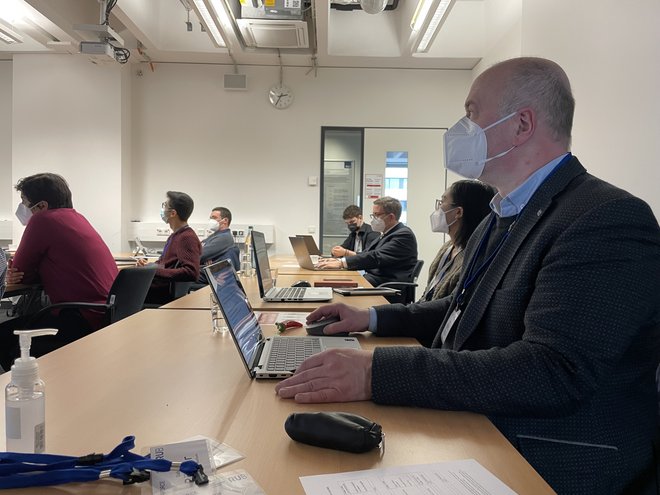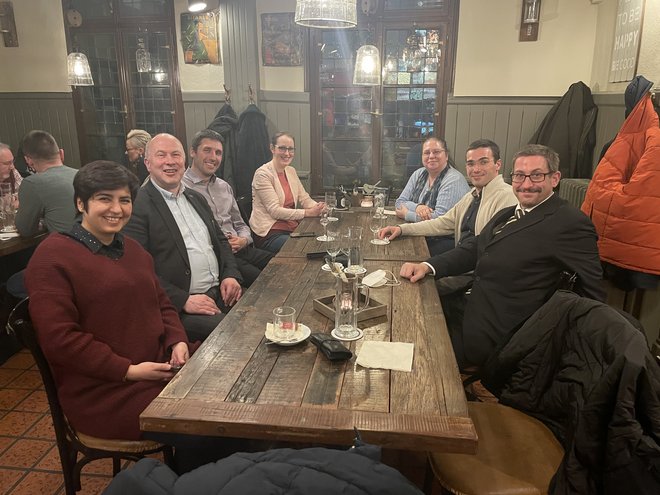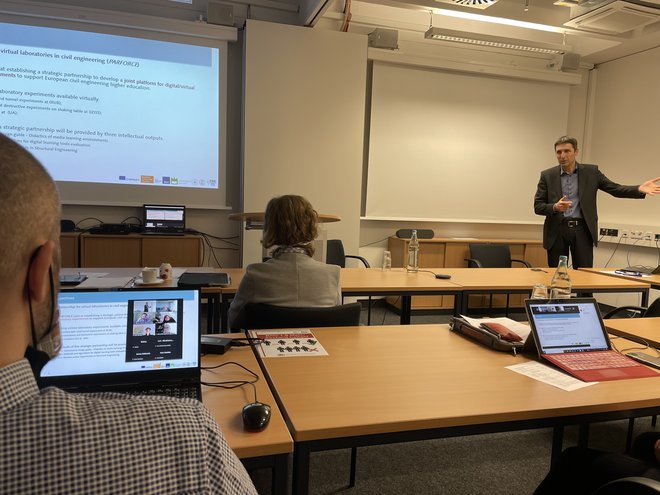Project Meetings
The project included several transnational meetings, starting with a kick-off meeting in Osijek (HR), followed by a didactic meeting in Bochum (D), a milestone meeting in Aveiro (PT), and a New-path meeting in Skopje (MKD). These meetings primarily focused on partner agreements, project status updates, and the planning of future project activities.
As part of the Strategic Partnerships, the involved partners held a kick-off meeting at Josip Juraj Strossmayer University of Osijek, Croatia. on 19th-20th July 2021. The meeting aimed to discuss the conduction of planned common project activities, define possible boundary conditions, division of partners contribution as well as aspects of project management were discussed.
Furthermore, discussion regarding planned intellectual outputs, responsibilities, and contribution of partners within the framework of each intellectual output was elaborated.

Didactic Meeting - Bochum, Germany

10th-12th February, 2022 at Ruhr University, Bochum
The three-day meeting which was held in a hybrid format, consisted of a number of presentations by the Centre for eLearning excellence (eLearning department) at Bochum university, who presented comprehensive overview of the possibilities and offers of eLearning at the PARFORCE project. The aim of these presentations is to use the information to motivate the planned further steps for the implementation of digital synchronous and asynchronous teaching offers, and offer lecturers off all partners to support the development of their pedagogical and didactic skills. The following topics were addressed:
- Basics for the design of teaching
- Basics: Laboratories in engineering education
- Considerations for the development of a Repository (didactic perspective)
- Teaching-learning scenarios: Inverted Classroom
- Teaching-learning scenarios: Collaborative Teaching-Learning methods (Peer Instruction, Problem oriented learning)
- Teaching-learning scenarios: Research oriented learning
At first the main didactic parameters of teaching that orients the teaching process to serve the students best were discussed, the main ideas of synchronized and asynchronized teaching methods were elaborated and the main learning models from instruction based, explorative and self-study learning models were elaborated. Secondly the importance of laboratories in engineering education and especially online laboratories was the focus of didactic, Online laboratories are interactive experiments that are provided over the Internet. Online laboratories can be divided into two main groups, software simulations and laboratories made up of real hardware equipment. Here a general classification of laboratories in teaching is introduced:

Within the contents of didactic of teaching, different teaching-learning scenarios were explored such as Virtual exchange which is based on student-centered, international, and collaborative approaches to learning where knowledge and understanding are constructed through online interaction and negotiation with students from other cultures, the main differences between virtual mobility and virtual exchange were elaborated and the Pedagogical strategies for Integration of Virtual Exchange into a course with different institutions were introduced and a number of successful examples of virtual exchange were elaborated. Another form of teaching scenario is the collaborative Teaching-Learning methods such as Peer Instruction which is a method for dealing with students' difficulties in understanding, which is also suitable for larger auditoriums. This concept was developed by Eric Mazur from Harvard and first used in physics lectures. This synchronous format teaching method is particularly suitable for tracking down and eliminating so-called misconceptions. The use of Peer Instruction requires good preparation. The voting question must be developed. This should not be a pure knowledge question; rather, the question must provide opportunity for discussion. Moreover, other learning scenarios such as inverted classrooms, research-oriented learning and problem-oriented learning models were detailed.
Finally, different possibilities for developing project repositories were focused on, here different possible repository options that best suits didactic perspectives for virtual experiments with in the PARFORCE project was discussed between experts and project coordinators. Outcomes of eLearning didactic course shall be summarized in an instructional design guide to address the possibilities and offers of eLearning incorporating virtual environments for experiments towards different learning methods (synchronous and asynchronous), possible combinations and corresponding appropriate tools.








